黑马程序员——第23天——网络编程()
2015-01-10 13:07
330 查看
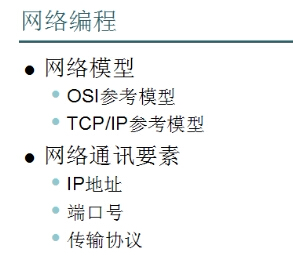

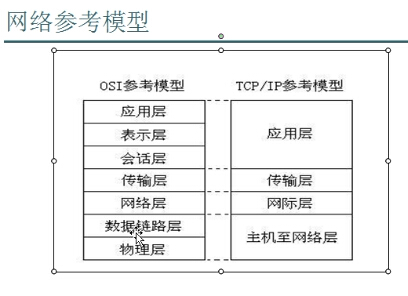
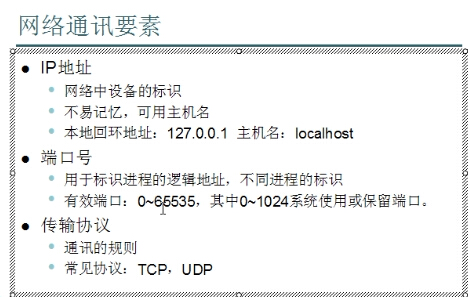
IP地址对应的对象是InetAddress
import java.net.*;
class IPDemo
{
public static void main(String[] args)
{
InetAddress i = InetAddress.getLocalHost();//获取本地主机
System.out.println(i.toString());
System.out.println("address:"+i.getHostAddress());
System.out.println("name:"+i.getHostName());
InetAddress ia = InetAddress.getByName("www.baidu.con");
System.out.println("address:"+ia.getHostAddress());
System.out.println("name:"+ia.getHostName());
}
}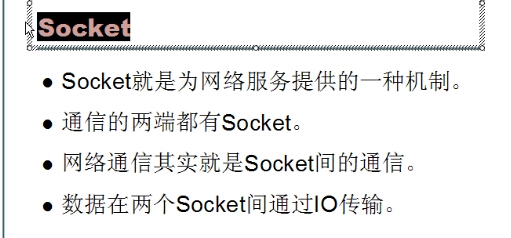
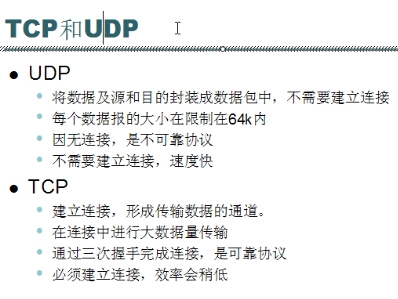
------------------------------------------------------------------------------------------------------------------------------------
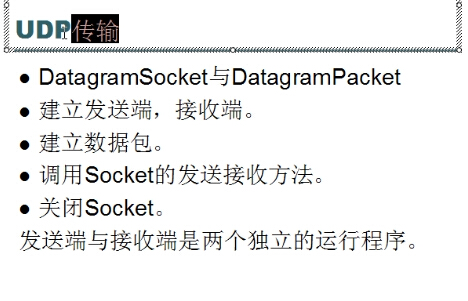
import java.net.*;
/*
需求:通过udp传输方式,将一段文字数据发送传出去。
定义一个udp的发送端
思路:
1,建立UDPsocket服务。
2,提供数据并将数据封装到数据包中。
3,通过socket服务的发送功能,将数据包发出去。
4,关闭资源。
*/
class UdpSend
{
public static void main(String[] args) throws Exception
{
//1,创建udp服务,通过DategramSocket对象。
DatagramSocket ds = new DatagramSocket();
//2,确定数据,并封装成数据包。DatagramPacket(byte[] buf,int length, InetAddress address, int port)
byte[] buf = "udp ge men lai le".getBytes();
DatagramPacket dp =
new DatagramPacket(buf,buf.length,InetAddress.getByName("192.168.1.254"),10000);
//3,通过socket服务,将已有数据包发送出去,通过send方法。
ds.send(dp);
//4,关闭资源。
ds.close();
}
}
/*
需求:
定义一个应用程序,用于接收并处理数据。
定义udp的接收端。
思路:
1,定义UDPsocket服务。通常会监听一个端口。其实就是给这个接收网络应用程序定义数字标识。
方便于明确哪些数据过来该应用程序可以处理。
2,定义一个数据包,因为要存储接收到的字节数据。
因为数据包对象中有更多功能可以提取字节数据中的不同数据信息。
3,通过socket服务的receive方法将收到的数据存入已定义好的数据包中。
4,通过数据包对象的特有功能。将这些不同的数据取出。打印在控制台上。
5,关闭资源。
*/
class UdpRece
{
public static void main(String[] args) throws Exception
{
//1,创建udp socket,建立端点。
DatagramSocket ds = new DatagramSocket(10000);
while(true)
{
//2,定义数据包。用于存储数据。
byte[] buf = new byte[1024];
DatagramPacket dp = new DatagramPacket(buf,buf.length);
//3,通过服务的receive方法将收到数据存入到数据包中。
ds.receive(dp);
//4,通过数据包的方法后去其中的数据。
String ip = dp.getAddress().getHostAddress();
String data = new String(dp.getData(),0,dp.getLength());
int port =dp.getPort();
System.out.println(ip+"::"+data+"::"+port);
}
//5,关闭资源
ds.close();
}
}class UdpSend2
{
public static void main(String[] args)
{
DatagramSocket ds = new DatagramSocket();
BufferedReader bufr =
new BufferedReader(new InputStreamReader(System.in));
String line = null;
while((line=bufr.readLine())!=null)
{
if("886".equals(line))
break;
byte[] buf = line.getBytes();
DatagramPacket dp =
new DatagramPacket(buf,buf.length,InetAddress.getByName("192.168.1.254"),10001);
ds.send(dp);
}
ds.close();
}
}
class UdpRece2
{
public static void main(String[] args)
{
DatagramSocket ds = new DatagramSocket(10001);
while(true)
{
byte[] buf = new byte[1024];
DatagramPacket dp = new DatagramPacket(buf,buf.length);
ds.receive(dp);
String ip = dp.getAddress().getHostAddress();
String data = new String(dp/getData(),0,dp.length());
System.out.println(ip+""::+data);
}
}
}/*
编写一个聊天程序。
有收数据的部分,和发数据的部分。
这两部分需要同时执行。
那就需要用到多线程技术。
一个线程控制收,一个线程控制发。
因为收和发动作是不一致的,所以要定义两个run方法。
而且这两个方法要封装到不同类中。
*/
import java.io.*;
import java.net.*;
class Send implements Runnable
{
private DatagramSocket ds;
public Send(DatagramSocket ds)
{
this.ds = ds;
}
public void run
{
try
{
BufferedReader bufr = new BufferedReader(new InputStreamReader(System.in));
String line = null;
while((line=bufr.readLine())!=null)
{
if("886".equals(line))
break;
byte[] buf = line.getBytes();
DatagramPacket dp =
new DatagramPacket(buf,buf.length;InetAddress.getByName("192.168.1.255"),10002);
ds.send(dp);
}
}
catch (Exception e)
{
throw new RuntimeException("发送端失败");
}
}
}
class Rece implements Runnable
{
private DatagramSocket ds;
public Rece(DatagramSocket ds)
{
this.ds = ds;
}
public void run()
{
try
{
while(true)
{
byte[] buf = new Byte[1024];
DatagramPacket dp = new DatagramPacket(buf,buf.length);
ds.recevie(dp);
String ip = dp.getAddress().getHostAddress();
String data =new String(dp.getData(),0,dp.getLength());
System.out.println(ip+":"+data);
}
}
catch (Exception e)
{
throw new RuntimeException("接收端失败");
}
}
}
class ChatDemo
{
public static void main(String[] args) throws Exception
{
DatagramSocket sendSocket = new DatagramSocket();
DatagramSocket receSocket = new DatagramSocket();
new Thread(new Send(sendSocket)).start();
new Thread(new Rece(receSocket)).start();
}
}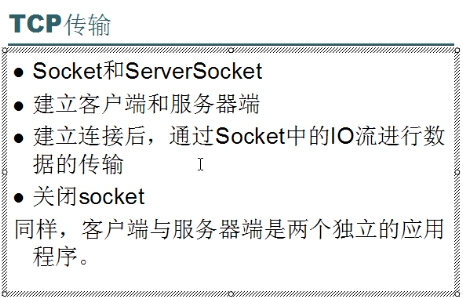
<strong>演示TCP传输:</strong> 1,TCP分客户端和服务端, 2,客户端对应的对象是Socket 服务端对应的对象是ServerSocket
<pre name="code" class="java">/*
客户端:
通过查阅socket对象,发现在该对象建立时,就可以去连接指定主机。
因为TCP是面向连接的。所以在建立socket服务时,
就要有服务端存在,并连接成功,形成通路后,在该通道进行数据的传输。
需求:给服务端发送一个文本数据。
步骤:
1,创建Socket服务。并指定要连接的主机和端口。
*/
import java.io.*;
import java.net.*;
class TCPClient
{
public static void main(String[] args) throws Exception
{
//创建客户端的socket服务。并指定目的主机和端口。
Socket s = new Socket("192.168.1.254",10003);
//为了发送数据,应该获取socket流中的输出流。
OutputStream out = s.getOutputStream();//这个流不用关,socket已关了
out.write("tcp gemen lai le".getBytes());
s.close();
}
}
/*
需求:定义端点接收数据并打印在控制台上。
服务端:
1,建立服务端的socket服务。ServerSocket();
并监听一个端口。
2,获取连接过来的客户端对象。
通过ServerSocket的accept方法,没有连接就会等,所以这个方法是阻塞式的。
3,客户端如果发过来数据,那么服务端要使用对应的客户端对象,并获取到该客户端对象的读取流来读取发过来的数据。
并打印在控制台。
4,关闭服务端。(可选)
*/
class TCPServer
{
public static void main(String[] args) throws Exception
{
//建立服务端socket服务,并监听一个端口。
ServerSocket ss = new ServerSocket(10003);
//通过accept方法获取连接过来的客户端对象。
Socket s = ss.accept();
String ip = s.getInetAddress().getHostAddress();
System.out.println(ip+"....connected");
//获取客户端发送过来的数据,那么要使用客户端对象的读取流来读取数据。
InputStream in = s.getInputStream();
byte[] buf = new byte[1024];
int len = in.read(buf);
System.out.println(new String(buf,0,len));
s.close();//关闭客户端。防止占用资源
}
}演示TCP的传输的客户端和服务端的互访。 需求:客户端给服务端发送数据,服务端收到后,给客户端反馈信息。
/*
客户端:
1,建立socket服务。指定要连接主机和端口。
2,获取socket流中的输出流。将数据写到该流中。通过网络发送给服务端。
3,获取socket流中的输入流,将服务端反馈的数据获取到,并打印。
4,关闭客户端资源。
*/
class TCPClient2
{
public static void main(String[] args) throws Exception
{
Socket s = new Socket("192.168.1.254",10004);
OutputStream out = s.getOutputStream();
out.write("客户端,你好".getByte());
InputStream in = s.getInputStream();
byte[] buf = new byte[1024];
int len = in.read(buf);
System.out.println(new String(buf,0,len));
s.close();
}
}
class TcpServer2
{
public static void main(String[] args) throws Exception
{
ServerSocket ss = new ServerSocket(10004);
Socket s = ss.accept();
String ip = s.getInetAddress().getHostAddress();
System.out.println(ip+"....connected");
InputStream in = s.getInputStream();
byte[] buf = new byte[1024];
int len = in.read(buf);
System.out.println(new String(bu
4000
f,0,len));
OutputStream out = s.getOutputStream();
Thread.sleep(10000);
out.write("哥们收到,你也好".getByte());
s.close();
ss.close();
}
}/*
需求:建立一个文本转换服务器。
客户端给服务端发送文本,服务端会将文本转成大写再返回给客户端。
而且客户端可以不断的进行文本转换,当客户端输入over时,转换结束。
分析:
客户端:
既然是操作设备上的数据,那么就可以使用IO技术,并按照IO的操作规律来思考。
源:键盘输入。
目的:网络设备,网络输出流。
而且操作的是文本数据。可以选择字符流。
步骤
1,建立服务。
2,获取键盘录入。
3,将数据发给服务端。
4,获取服务端返回的大写数据。
5,结束,关资源。
都是文本数据,可以使用字符流进行操作,同时提高效率,加入缓冲。
*/
import java.io.*;
import java.net.*;
class TransClient
{
public static void main(String[] args) throws Exception
{
Socket s = new Socket("192.168.1.254",10005);
//定义读取流
BufferedReader bufr =
new BufferedReader(new InputStreamReader(System.in));
//定义目的,将数据写入到socket输出流。发给服务端。
//BufferedWriter bufOut =
//new BufferedWriter(new OutputStreamWriter(s.getOutputStream()));
PrintWriter out = new PrintWriter(s.getOutStream(),true);//简化代码,同88行
//定义一个socket读取流,读取服务端返回的大写信息。
BufferedReader bufIn =
new BufferedReader(new InputStreamReader(s.getInputStream()));
String line = null;
while((line=bufr.readLine())!=null)
{
if("over".equals(line))
break;
out.println(line);
//bufOut.write(line);//数据没出去,缓冲区得刷一下。
//bufOut.newLine();//发的时候没有回车符,读的时候读不到回车标记就继续等待,加回车。87行
//bufOut.flush();
String str = bufIn.readLine();
System.out.println("server:"+str);
}
bufr.close();
s.close();//结束标记,循环结束,导致服务端结束
}
}
/*
服务端:
源:socket读取流。
目的:socket输出流。
都是文本,装饰。
*/
class TransServer
{
public static void main(String[] args) throws Exception
{
ServerSocket ss = new ServerSocket(10005);
Socket s = ss.accept();
String ip = s.getInetAddress().getHostAddress();
System.out.println(ip+"....connected");
//读取Socket读取流中的数据。
BufferedReader bufIn =
new BufferedReader(new InputStreamReader(s.getInputStream()));
//目的。Socket输出流。将大写数据写入到Socket输出流,并发送给客户端。
//BufferedWriter bufOut =
//new BufferedWriter(new OutputStreamWriter(s.getOutputStream()));
PrintWriter out = new PrintWriter(s.getOutputStream(),true);//简化上面的代码,下面while中的代码也就一块简化了。
String line = null;
while((line=bufIn.readLine())!=null)//发的时候没有回车符,读的时候读不到回车标记就继续等待
{
System.out.println(line);
out.println(line.toUpperCase());
//bufOut.write(line.toUpperCase());
//bufOut.newLine();
//bufOut.flush();
}
s.close();
ss.close();
}
}
/*
该例子出现的问题。
现象:客户端和服务端都在莫名的等待。
为什么呢?
因为客户端和服务端都有阻塞式的方法。这些方法没有读到结束标记,就会一直等,
而导致两端,都在等待。
*/上传文件import java.io.*;
import java.net.*;
class TextClient
{
public static void main(String[] args) throws Exception
{
Socket s = new Socket("192.168.1.254",10006);
BufferedReader bufr =
new BufferedReader(new FileReader("IPDeme.java"));
PrintWriter out = new PrintWriter(s.getOutStream(),true);
String line = null;
while((line=bufr.getLine())!=null)
{
out.println(line);
}
s.shutdownOutput();//关闭客户端的输出流。相当于给流中加入一个结束标记-1;
BufferedReader bufIn = new BufferedReader(new InputStreamReader(s.getInputStream()));
String str = bufIn.readLine();
System.out.println(str);
bufr.close();
s.close();
}
}
class TextServer
{
public static void main(String[] args) throws Exception
{
ServerSocket ss = new ServerSocket(10006);
Socket s = ss.accept();
String ip = s.getInetAddress().getHostAddress();
System.out.println(ip+"....connected");
BufferedReader bufIn = new BufferedReader(new InputStreamReader(s.getInputStream()));
PrintWriter out = new PrintWriter(new FileWriter("server.txt"),true);
String line = null;
while((line=bufIn.readLine())!=null)
{
//if("over".equals(line))通过时间戳匹配关闭。
// break;
out.println(line);
}
PrintWriter pw = new PrintWriter(s.getOutputStream(),true);
pw.println("上传成功");
out.close();
s.close();
ss.close();
}
}
相关文章推荐
- 黑马程序员_学习笔记第23天——网络编程
- 黑马程序员_学习笔记第23天——网络编程TCP/UDP
- 黑马程序员——Java基础->网络编程(UDP)
- 黑马程序员—网络编程之UDP
- 黑马程序员——网络编程
- 黑马程序员—网络编程
- 黑马程序员——网络编程
- 黑马程序员—网络编程之UDP
- 黑马程序员——网络编程(二)
- 黑马程序员——网络编程——网络编程概述,UDP协议,TCP协议
- 黑马程序员——Java基础—网络编程
- 黑马程序员---网络编程
- 黑马程序员——Java基础->网络编程(TCP)
- 黑马程序员——Java 网络编程学习
- 黑马程序员—网络编程之TCP
- 黑马程序员——Java基础——网络编程
- 黑马程序员--Java基础学习(网络编程)第二十四天
- 黑马程序员—网络编程
- 黑马程序员—网络编程
- 黑马程序员09-网络编程自我提问
